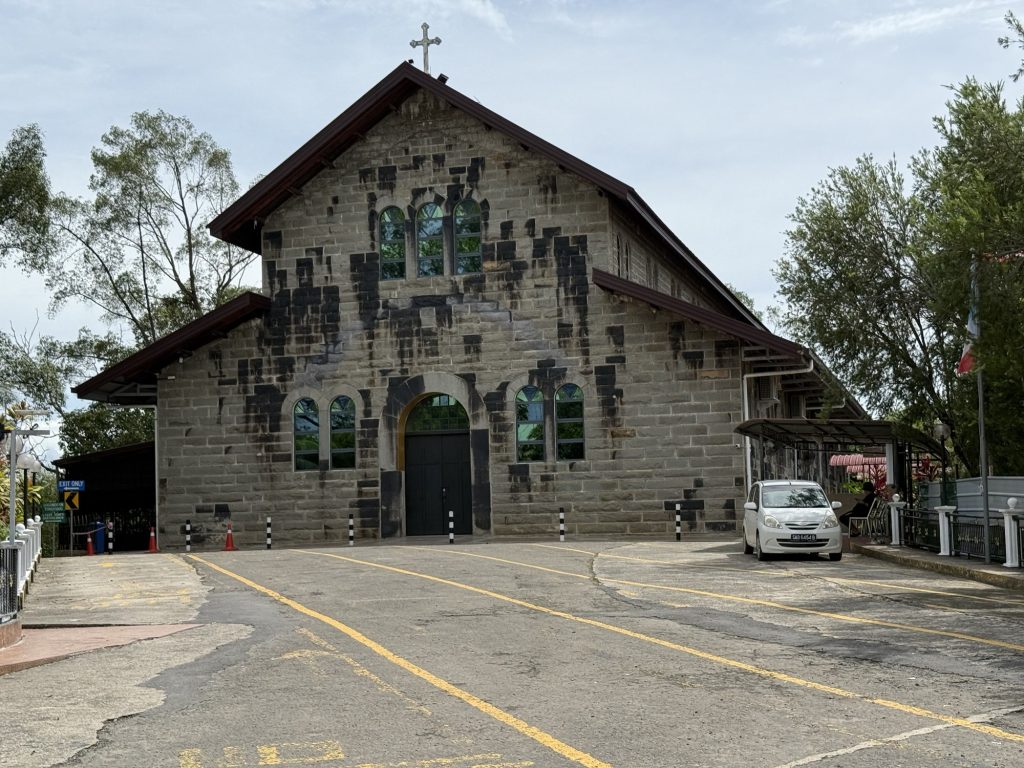At the top of a hill where the historic St Michael’s Church stands, the surrounding communities below are now torn by a plan to expand the cemetery grounds within the church compound.
Built in 1947 from stones hand-cut in the aftermath of World War II, St Michael’s has long been a symbol of Penampang’s Catholic roots.
But today, the church finds itself at the centre of a bitter dispute over a committee’s decision to reopen and extend its long-closed burial site — a move that has rekindled deep questions about land, heritage, and belonging.
The proposed expansion would see the reconstruction of older graves and the creation of 246 new burial lots on a sloping plot of land below the main church building.
Each lot is reportedly priced between RM20,000 and RM30,000, sparking concerns that commercialisation could erode the sacred character of the site.
“We are not against the church,” said Gerald Gom, a retired government servant and landowner whose family has lived near St Michael’s for decades.
“But many are scared to speak because they don’t want to be seen as going against the church.”
Among those opposing the expansion is Datuk John Ambrose, a political figure and landowner whose property borders the church grounds.
“We were not properly consulted. If you build a cemetery here, my land value will go down — who is going to pay for that?” he said.
“This isn’t about politics. It’s about respect — for the land, the people, and the process.”
Despite efforts by villagers to halt the project — including a protest staged in September 2022, a formal objection letter submitted by Kampung Dabak village chief Severin Wong, and an online poll showing 570 residents opposed the move — the Penampang Municipal Council raised no objections.
Earlier this month, lorries carrying construction materials were spotted entering the church grounds after Easter Sunday, confirming that work had quietly begun.
Wong, whose family ties predate the church’s construction, recalled that a former parish priest had once ruled out any further burials on the slopes.
This was in 1965.
“There is no need to expand,” Wong said, adding that he has since stopped attending prayers at St Michael’s — despite living within walking distance of its bell tower.
Many other villagers, reluctant to challenge church authority openly, have quietly shifted to other parishes.
“People are afraid to be seen as disrespecting the church. But their silence is actually their way of expressing their opposition,” Wong said.
Landscape architect and nearby landowner Eric Ye also criticised the project, arguing that alternative solutions could have protected both the church’s heritage and the surrounding environment.
“We’re not against the idea of a cemetery. But there are much better ways they could have planned it — ways that respect the community, and think about what this place should be 50 or 100 years from now,” he said.
Ye further pointed to zoning issues, noting that the land is officially designated for places of worship rather than commercial activities.
“There’s a conflict of land use here. As far as we know, the land use has not been updated or changed,” he said.
Adding his voice to the debate, Penampang Tourism Association president Benjamin Golimbi urged a broader view about the church’s role in the community.
“St Michael’s isn’t just another church. For many of us in Penampang, it’s a special place, full of history, memories, and meaning.
“I completely understand why families would want their loved ones buried near the church. That connection is deep and personal, and I respect that.
“But maybe we could also think about the bigger picture. If the cemetery keeps expanding too much, it might slowly change the look and feel of the church grounds. And in the long run, it might make it harder to preserve the area as a historical or tourism spot.”
Despite efforts by BorneoVox to seek clarification, the church committee behind the expansion has not responded.
For many in Kampung Dabak, the dispute has not only strained their trust in leadership but also shaken their sense of belonging to a church that once stood as a symbol of unity, faith, and community. – April 28, 2025

